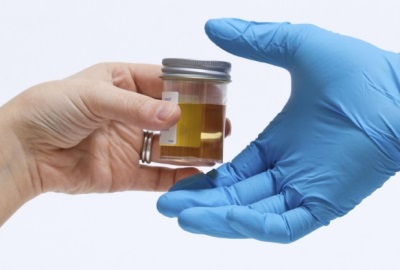The rate of urine analysis in children according to Nechiporenko
Nechiporenko analysis is one of urine tests, helping to clarify the diagnosis and treatment of diseases of the organs of the excretory system. Why is he assigned to a child, how to prepare for such an analysis and what will his results tell about?
What is different from the general urine test?
While a general urine test can be called a screening analysis, the Nechiporenko test has a different purpose. This analysis helps to verify the presence of inflammation and clarify its localization.
Detection of blood cells in the general analysis involves counting in the field of view of the microscope. And for analysis according to Nechyporenko, the number of white blood cells and red blood cells is considered per unit volume.

Indications
Urine analysis according to Nechiporenko is prescribed if an inflammatory process in the kidneys is suspected. Most often, such an analysis is carried out after a general urine study, which has shown an increased number of white blood cells or red blood cells. This test is also performed to monitor the treatment that is being performed on a child with kidney disease.
Training
Day or two before the study should be moderately consumed plant and meat products, so that the food does not change the acidity of urine, which can affect the number of cylinders.
A child before such a study should not take drugs with a diuretic effect, as frequent urination distorts the results of this test. Physical and emotional overload should also be excluded.
Collection analysis
Before collecting urine, the child’s genitals should be flushed to prevent additional leukocyte urine from entering the urine sample. So that the renal function was shown most reliably in the analysis, an average portion of the excreted urine is collected.
The child is told to start urinating into the toilet, then part of the urine is taken to the container, after which the child ends up urinating again into the toilet.
If the child is too small, it is possible to collect all the excreted urine, but this should be warned to the doctor, who will decipher the results of the test. Bring the collected material to the laboratory should be within 1-2 hours after urination.
Where can I take the analysis?
Nechiporenko is tested in the state clinic, as well as in the hospital. Also, parents can pass the urine of a child for analysis in private laboratories.
Normal performance
A urine test according to Nechiporenko determines only 3 indicators in 1 milliliter of urine:
|
Indicator |
Norm |
|
White blood cells |
Less than 2000 |
|
Red blood cells |
Less than 1000 |
|
Cylinders |
Less than 20 pieces |
Causes of deviations
- Red blood cell excess in the sample according to Nechiporenko indicates kidney damage, due to which blood cells enter the urine. Such damage may be glomerulonephritis, as well as nephritis caused by toxic damage. Erythrocyte elevation also occurs with stones, tuberculosis and tumor processes in the urinary tract and kidneys.
- Leukocyte excess as a result of the analysis indicates the presence of inflammation of an infectious nature. The child may have pyelonephritis or cystitis.
- A large number of cylinders characteristic of both infectious inflammation (pyelonephritis) and lesions of the renal parenchyma.











